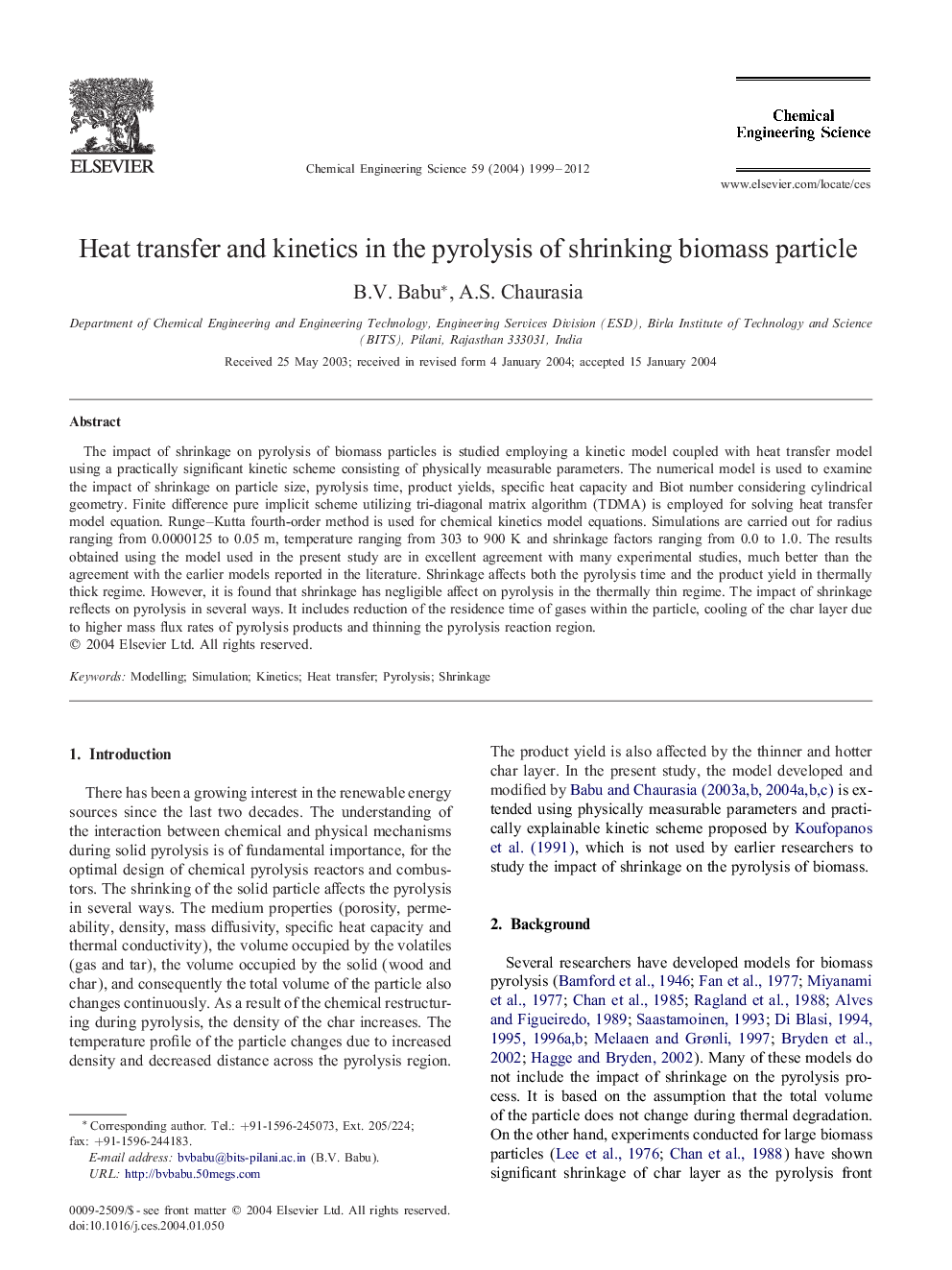| Article ID | Journal | Published Year | Pages | File Type |
|---|---|---|---|---|
| 160108 | Chemical Engineering Science | 2012 | 14 Pages |
The impact of shrinkage on pyrolysis of biomass particles is studied employing a kinetic model coupled with heat transfer model using a practically significant kinetic scheme consisting of physically measurable parameters. The numerical model is used to examine the impact of shrinkage on particle size, pyrolysis time, product yields, specific heat capacity and Biot number considering cylindrical geometry. Finite difference pure implicit scheme utilizing tri-diagonal matrix algorithm (TDMA) is employed for solving heat transfer model equation. Runge–Kutta fourth-order method is used for chemical kinetics model equations. Simulations are carried out for radius ranging from 0.0000125 to , temperature ranging from 303 to and shrinkage factors ranging from 0.0 to 1.0. The results obtained using the model used in the present study are in excellent agreement with many experimental studies, much better than the agreement with the earlier models reported in the literature. Shrinkage affects both the pyrolysis time and the product yield in thermally thick regime. However, it is found that shrinkage has negligible affect on pyrolysis in the thermally thin regime. The impact of shrinkage reflects on pyrolysis in several ways. It includes reduction of the residence time of gases within the particle, cooling of the char layer due to higher mass flux rates of pyrolysis products and thinning the pyrolysis reaction region.
